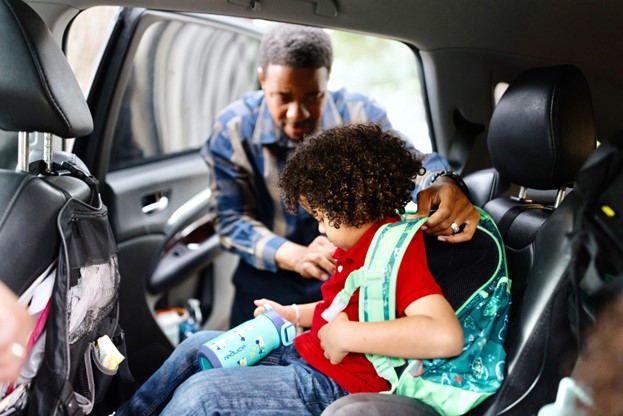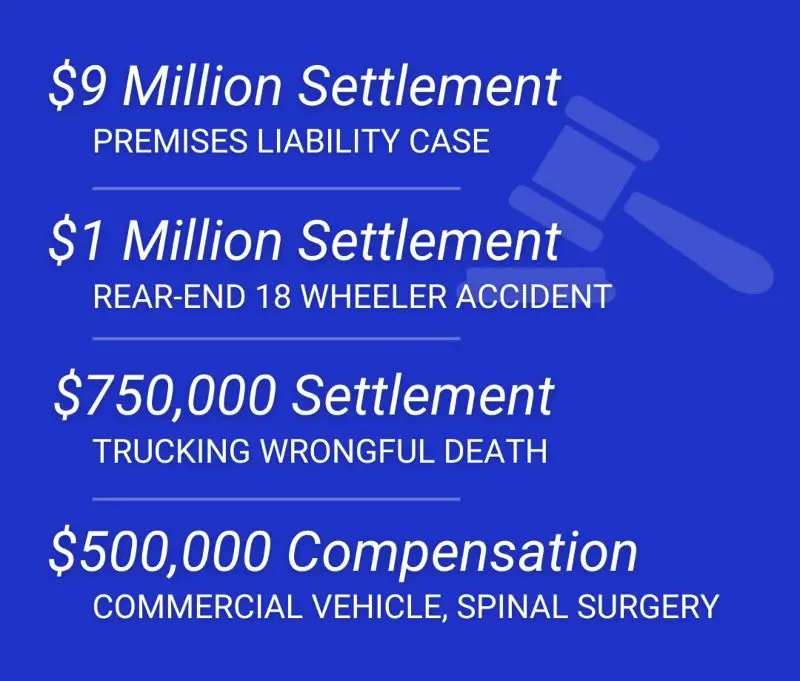Providing information on Car Seat Laws in Houston, TX
Keeping your child safe on the road is more than just the right thing. It’s the law in Houston, TX, and we at Nava Law Group are here to help you understand all the requirements. Texas car seat laws, booster seat requirements, and seat belt regulations exist to protect your kids from harm every time you get behind the wheel. Yet, with frequent updates in safety guidelines and evolving state regulations, even the most attentive parents can feel unsure about what’s required. This comprehensive guide breaks down all you need to know. With insights tailored for Houston families and support from Nava Law Group, you’ll be equipped to travel confidently, knowing you’re taking the right steps to protect your loved ones.
Prioritizing Your Child’s Safety with Texas Car Seat Laws
Car accidents are one of the leading causes of injury and death among children in the United States, including Texas. That’s why the state’s car seat laws are designed to prioritize the safety of your youngest passengers from their very first ride. Compliance with car seat laws in Texas isn’t merely about avoiding a ticket. It significantly increases your child’s chances of surviving a crash without serious injury. Statistics show that proper use of a car seat can reduce the risk of fatal injury by up to 71% for infants and 54% for toddlers. Here are the Texas car seat laws at a glance:
- Children under five and shorter than 36 inches must be securely fastened in a car seat suitable for their height and weight.
- The back seat is considered the safest place for any child in a moving vehicle.
- Children who are one year old or older and weigh 20 to 40 pounds should transition to a convertible seat that faces forward and backward.
Protect Your Child by Choosing the Right Car Seat
Selecting the correct car seat can feel overwhelming, but it’s vital for compliance and, most importantly, your child’s safety. Texas car seat laws require a seat that fits the child’s age and size. Here’s how to make the right choice:
- Rear-facing seats are required for infants and toddlers until they are at least two or until they outgrow the height/weight limits set by the car seat manufacturer.
- For most infants, this means starting with a rear-facing-only car seat or a convertible car seat used in the rear-facing position.
- Once your child outgrows their rear-facing seat by age or weight, transition to a forward-facing car seat with a harness. This is typically suitable for toddlers ages one and up, weighing between 20 and 40 pounds.
Step-by-Step Guide to Installing a Car Seat
Car crashes remain one of the leading causes of injuries and fatalities for children, which makes car seat safety a critical aspect of protecting young passengers. Many parents are unaware that improper installation of car seats can significantly reduce their effectiveness during an accident. Ensuring your car seat is installed correctly provides maximum protection and follows legal requirements in most states. Taking time to familiarize yourself with the manufacturer’s instructions and your vehicle’s manual is an essential first step. Here’s a step-by-step guide to help you ensure proper installation:
- Choose the right car seat based on your child’s age, weight, and height, ensuring it complies with Texas safety requirements.
- Inspect your vehicle manual to determine the correct placement for the car seat and identify the location of anchors or seat belt paths.
- Secure the seat tightly using the LATCH system or the seat belt, checking for no more than an inch of movement side-to-side or front-to-back.
- Adjust the harness straps to be snug and positioned correctly at chest level, ensuring your child is well-secured.
- Verify installation regularly to ensure the seat hasn’t loosened or become misaligned over time.
Schedule Your Free Car Seat Check
Did you know four of every five car seats are not installed correctly? Parents and caregivers can take advantage of free car seat check events sponsored by the Texas Children’s Childhood Injury Prevention Center and the Greater Houston Coalition for SAFE KIDS. These events ensure that car and booster seats are properly installed and meet safety standards. Certified technicians provide hands-on assistance and guidance, helping families understand how to secure their children safely during travel. By participating in these checks, families can gain peace of mind knowing their children are protected on the road.
Know When to Transition Into a Booster Seat in Texas
Understanding the proper stages of car seat transitions is essential for keeping your child safe on the road. Each step, from rear-facing seats to booster seats, provides age-appropriate protection tailored to your child’s size and development. Following the guidelines set by safety experts and Texas law ensures your child remains secure during every car ride. Booster seat requirement laws in Texas are clear, but understanding the timing matters. Prematurely moving a child to a booster can put them at risk. When is it time to use a booster seat in Texas?
- Your child should remain in a forward-facing harness until they outgrow the seat’s limits.
- Texas booster seat laws state that children who weigh more than 40 pounds and are at least 36 inches tall can transition to booster seats.
- Children between 40 pounds and 4 feet 9 inches tall must use a booster seat with a lap and shoulder belt, not just a harness.
- Always remember that the lap and shoulder belts must fit properly. The lap belt should lie snugly across the upper thighs, and the shoulder belt should cross the chest and shoulder, not the neck or face.
How to Install a Booster Seat
Booster seats are crucial in ensuring your child’s safety as they grow and outgrow traditional car seats. Designed to position your child so that the car’s seat belt fits correctly across their body, a booster seat reduces the risk of injury in an accident. Proper installation and usage are essential to maximize its effectiveness. Follow these steps to install a booster seat safely and correctly:
- Choose the correct booster seat based on your child’s age, weight, and height, ensuring it meets safety standards.
- Properly position the booster seat in the back seat of your car, ideally in the middle seat, for maximum safety.
- Use the vehicle’s seat belt system to secure your child, threading the lap belt low across their hips and the shoulder belt across their chest and shoulder.
- Ensure no twists in the seat belt to maintain its effectiveness during use.
- Check the fit regularly as your child grows, adjusting the seat belt to maintain proper positioning for ongoing safety.
When Should My Child Move to a Seat Belt in Texas?
A question every parent eventually faces is, “When is my child ready to use just a seat belt?” Overshooting this transition can lead to preventable injuries, so it helps to know the law. Until your child is at least 13, the safest place for them is still the back seat. Airbags in the front seat can cause severe harm to younger kids, even if they meet height requirements. When can my child stop using a booster seat in Texas?
- Once your child is over 4 feet 9 inches tall, they can legally ride using only the vehicle’s lap and shoulder seat belt.
- However, the American Academy of Pediatrics recommends children remain in a booster until the vehicle seat belt fits them properly.
Proper Seat Belt Fit Test
Before moving on to the proper seat belt fit test, it’s essential to understand the guidelines that ensure your child’s safety while transitioning out of a booster seat. The following points will help you determine if your child is ready to use the vehicle’s seat belt alone:
- The child’s back is against the seat, and knees bend at the edge without slouching.
- The lap belt fits low across the hips/thighs, not the stomach.
- The shoulder belt sits across the center of the chest and shoulder.
Learn More About the Seat Belt Law in Texas
Understanding car and booster seat requirements is only part of keeping your family safe. Texas also enforces strict seat belt laws that apply to everyone, child or adult, in every part of the vehicle. Key points to remember about Texas seat belt laws include the following:
- All drivers and passengers eight years or older, or younger than eight but at least 57 inches tall (4’9″), must wear a seat belt.
- Failing to use a seat belt is a primary offense. This means an officer can stop and ticket you for not wearing one.
- Seat belt rules apply regardless of where you’re seated; back-seat passengers must buckle up, too.
Even When Done Right, Injuries Can Happen
Accidents can and do happen despite your best efforts to follow car seat, booster seat, and seat belt laws. The goal is always to minimize risk, but it helps to know what can still go wrong. Proper use of restraints can significantly reduce the severity of these injuries, but there’s no substitute for high-quality legal and medical care if the worst occurs. Common injuries to children in vehicle accidents include:
- Head and brain injuries (including concussions and traumatic brain injuries)
- Spinal cord and neck injuries
- Organ injuries and internal bleeding
- Broken bones and fractures
- Cuts, bruises, and lacerations from broken glass or sudden movement
- Psychological trauma resulting from the accident
Additional Ways to Protect Your Child in a Car
Aside from ensuring your child is properly secured in a car seat or with a seatbelt, there are other essential precautions to enhance their safety. Always lock the car doors and windows to prevent accidental openings during the drive. Keep loose objects secured, as they can become dangerous projectiles in the event of sudden braking or a collision. Ensure the child does not overheat by avoiding leaving them unattended in a parked car, especially in warm weather. Finally, teach your child the importance of staying seated and calm while the vehicle moves to minimize distractions for the driver. These measures can provide additional protection for your child during car rides.
We’re Ready to Help at Nava Law Group
At Nava Law Group, we see firsthand how critical following Texas car seat laws and booster seat rules can be for protecting children in the event of a crash. Our Houston-based team is dedicated to supporting families not just after an incident—but by ensuring you have the information you need to keep your loved ones safe daily. If your family is affected by a car accident or you have questions about compliance with Texas booster laws, contact our attorneys for a free consultation. We are committed to helping you understand your options and pursue the best path forward for your situation. You don’t need to face the aftermath of an accident alone. Contact Nava Law Group for compassionate, expert guidance when needed.
Take Action for Your Child’s Safety
Being informed about Texas car seats, booster seats, and seat belt laws is more than staying compliant. It’s about taking active steps to protect your children and give them the safest possible future on the road. Review your car seat setup, ensure your vehicle and booster seats meet Texas requirements, and stay updated with new guidelines as your child grows. Nava Law Group is here for Houston families every step of the way for trusted legal backup and answers to all your road safety questions. Contact us today for more information.









